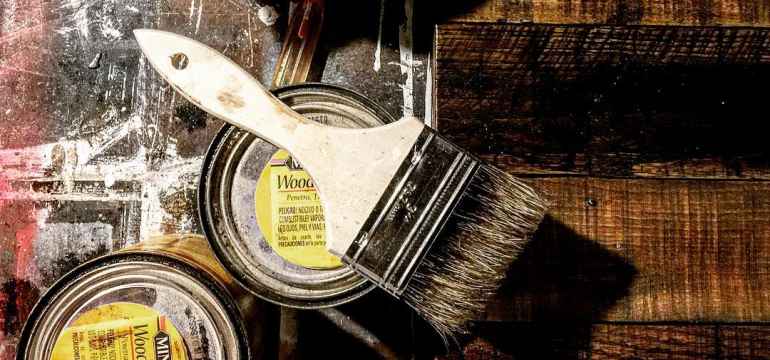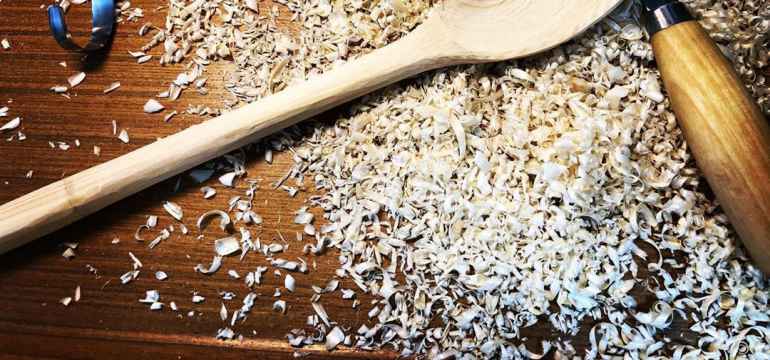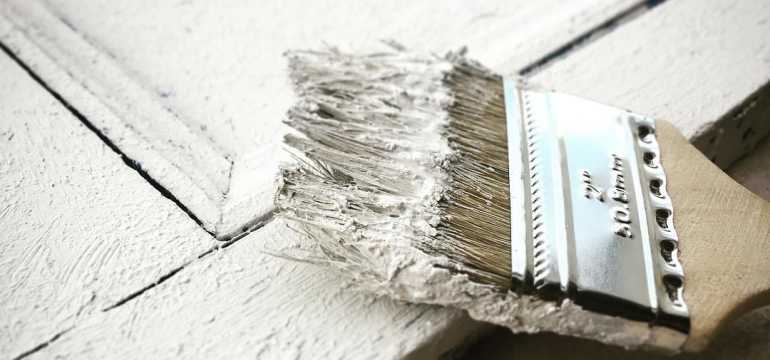While shopping for various supplies at your local hardware store or home improvement store, you may have noticed an odd kind of brush called a chip brush. Maybe you bought one, thinking you might eventually need it. After all, they were probably priced very cheaply.
However, you may want to think twice before you start dipping a chip brush into the paint. So what is a chip brush? We are here to demystify the purpose and existence of chip brushes for you, so you can use them as they were intended.
What is a Chip Brush Used For?
There are a couple of different uses for a chip brush. Some workers swear by one type of use, while others insist that their specific way of using the brush is the best. We will take a look at both purported uses and let you decide.
Chip Brush Use #1
 Officially, a chip brush is designed for use when you are applying harsher types of chemical solvents. If you try to apply certain chemicals with a standard paintbrush, the bristles could melt. Chip brushes, by contrast, have tougher bristles called White China bristles, and they are able to sustain continuous immersion in substances such as paint remover, stain, resin, glue, epoxy, oils, and cleaners.
Officially, a chip brush is designed for use when you are applying harsher types of chemical solvents. If you try to apply certain chemicals with a standard paintbrush, the bristles could melt. Chip brushes, by contrast, have tougher bristles called White China bristles, and they are able to sustain continuous immersion in substances such as paint remover, stain, resin, glue, epoxy, oils, and cleaners.
If you try to apply sticky epoxy with a normal paintbrush, you are quickly going to realize that it’s not working out well. The bristles will likely start to deteriorate or fall out, so you will have bristles stuck into the epoxy surface you are working on, which can be extremely frustrating. To make matters worse, the extra drag and effort on the paintbrush may cause the handle to fall off.
Chip brushes are specifically designed to hold up under such working conditions. Their bristles are glued in tightly so they will not come out while you are applying resin, stain, epoxy, or other substances. The handles are also made extra secure to endure the additional force of applying very sticky, gooey substances.
So essentially, a chip brush is a type of brush that is resistant to solvents and solidly made, so you don’t have to spend time picking brush bristles out of your coated surface. If you need to apply glue, stain, paint remover, oil, or other thicker, harsher chemicals, a chip brush is a way to go.
Chip Brush Use #2
 Some users insist that a chip brush is simply created for brushing away chips. Imagine that you are working with wood, perhaps machining, drilling, carving, or otherwise manipulating its form to suit your project. You are bound to end up with little chips and bits of wood all over your workbench or worktable. You may also find that wood chips scattered all over the machinery you are using, like saws and other implements.
Some users insist that a chip brush is simply created for brushing away chips. Imagine that you are working with wood, perhaps machining, drilling, carving, or otherwise manipulating its form to suit your project. You are bound to end up with little chips and bits of wood all over your workbench or worktable. You may also find that wood chips scattered all over the machinery you are using, like saws and other implements.
What if you tried to brush those bits of wood away with your bare hands? You could end up with a number of splinters, and you might even nick your fingers on the saw blades or other tools you were using if you’re not careful. Plus, even if you use gloves to brush away the chips, you would find that the gloves are not very effective at cleaning away the debris and ensuring a clear surface.
Enter the chip brush! It does look very much like a paintbrush, but it acts like a miniature broom, enabling you to rid your work area of splinters, wood dust, and wood chips. Some users swear by it for metal-working as well; they use its bristles to sweep away leftover dust, metal chips, and debris from their machining process.
As seriously as some might swear by this mode of use for the chip brush, the official, intended use for chip brushes is for the application of glue, epoxy, resin, and similar substances.
Can You Paint with a Chip Brush?
 Well, you could. But you probably shouldn’t. While a chip brush could technically be used to transfer paint from a bucket or tray to a surface, it may not be going to give you the nice smooth application you want. It doesn’t have the right bristles to achieve the ideal even brushstrokes that you need when you are painting a wall, a piece of trim, or piece of furniture. It is crafted to handle thicker, gooier substances than regular paint.
Well, you could. But you probably shouldn’t. While a chip brush could technically be used to transfer paint from a bucket or tray to a surface, it may not be going to give you the nice smooth application you want. It doesn’t have the right bristles to achieve the ideal even brushstrokes that you need when you are painting a wall, a piece of trim, or piece of furniture. It is crafted to handle thicker, gooier substances than regular paint.
Chip brushes are often sold cheaply, intended for one-time use only. Since they are going to be coated in goop, it makes sense to dispose of them rather than trying to clean them and use them again. You can obtain various sizes of chip brush, with the most common sizes ranging from 1 inch to 4 inches wide.
Whether you decide to employ your chip brush to spread sealer, epoxy, or glue—or whether you opt for the unofficial application and sweep wood chips off your workbench—you are sure to find a handy use for this helpful tool.
- Is a Hot Water Heater In the Attic a Good or Bad Idea? - July 18, 2021
- Lawn Mower Starts Then Dies – Here’s the Fix! - June 21, 2021
- Can You Mix Pine-Sol and Bleach? - September 9, 2020

TJ Mac
Thursday 14th of April 2022
If a "chip brush" isn't made for chips but rather for glue why isn't it called a "Glue brush" or "goop brush"?